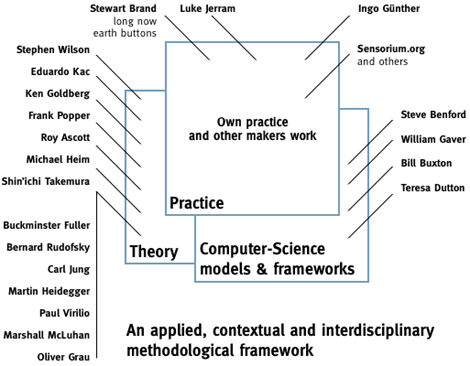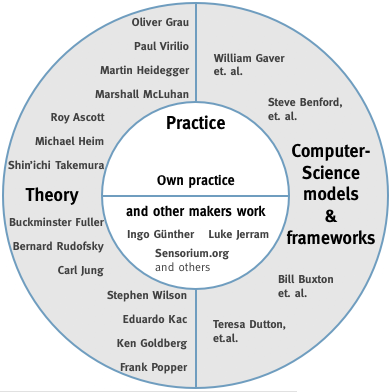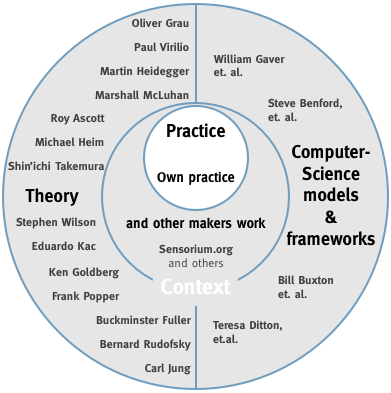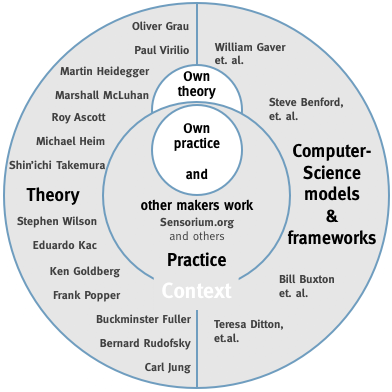A system of research methodsWhile I was reading-up on and searching for the "right, practice-based, interdisciplinary art and design" research methodology, in the background another thread took shape, almost naturally and in my spare time. I called it "experiential qualities," never anticipating that it would later become part of my methodology. Indeed, life sometimes is very strange. My curiosity exploring the relationship of telematics, visualisation technologies or what is better designated as trans-formation, biofeedback, presence & immersion, and the global consciousness experience in fact turned into part of my methodology. The two examples of "Ambiguity" and "SSD" (left menu) are simply listed for historical reasons and have finally not been applied. 
|
|||
|
A system of methods for modeling, evaluating and analysing own work, other peoples work and interviews with participants about their experience of telematic art. Own practice and theory surrounded by a contextual research encompassing other peoples work, theoretical texts from philosophy, art history and artists together with models and frameworks used by computer sciences. |
|||
The historical development of the diagramThe first version was still called a "framework" but contained the basic elements: 
|
|||
|
Version 2: Two distinct areas practice and theory. Own theory and context still unclear. Other peoples practice is more part of my practice in this diagram than part of the context, what it actually is. 
|
|||
|
Version 3: The "Own practice" area has become smaller emphasising that "other makers practice" is part of the whole body of contextual analysis, contextual research that informs own views and reflecting back upon the contextual analysis. The word "context" shows up connecting the areas. (But don't I have a theory as well?) 
|
|||
|
Version 4: Introducing "Own Theory," but my theory and my practice are disconnected. 
|
|||
|
The current version: Emphasising that my theory and my practice form a coherent, connected body. Surrounded by a contexual study / analysis. 
|
|||
|
The Tag cloud for my thesis text (without Appendix) available under "Papers":
application art awareness become being communication concept connecting create data different earth effects environment example experience exploration figure global immersive interactive interface interviewee interviews map media methods participants people perceived physical process quality radio radiomap remote research result sense space spatiality study system technology telematic transformation used visitors work world created at TagCrowd.com
|
|||
| last update: 11/20/02022 19:13 About Contact Disclaimer Glossary Index |
|||
